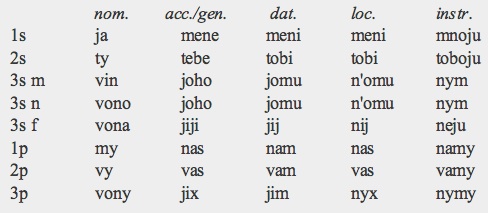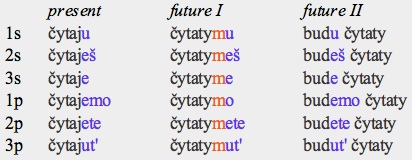An insatiable appetite for ancient and modern tongues


Alternative Name: Ukranian.
Name Origin: from ukraina, the 'border region'.
Classification: Indo-European, Slavic, East Slavic. The other East Slavic languages are Russian and Belarusian.
Overview. Ukrainian is an East Slavic language that descends from the vernacular spoken in the first Slavic state (10th-13th centuries), centered in Kiev, emerging as a distinctive language towards the 13th century. It is, with Polish, the second largest Slavic language. It resembles Russian less closely than does Belarusian, though all three languages are in part mutually intelligible. Due to the political subordination of Ukraine, Ukrainian literature started only at the end of the 18th century.
Distribution. Ukrainian is spoken in Ukraine along with substantial minorities in Russia and Poland. Many Ukrainian expatriates live in Canada and the United States.
Speakers. Around 40 million in the following countries:
Ukraine
Russia
Canada
Poland
U.S.A.
38,000,000
1,800,000
200,000
150,000
130,000
Status: It is the official language of Ukraine.
Varieties. Three dialect groups exist:
-
•Northern: spoken north of a line joining the cities of Luts'k, Kiev, Sumy.
-
•Southeastern: spoken to the east of a line linking the cities of Zhytomyr and Balta.
-
•Southwestern: spoken to the west of a line linking the cities of Zhytomyr and Balta.
Standard Ukranian is based on the southeastern dialects, namely that of the Kiev-Poltava region, but it has also been influenced, lexically and phonologically, by southwestern dialects.
Periods
10th-13th c. Old East Slavic. It was characterized by the coexistence between literary Church Slavonic (a South Slavic language), somewhat adapted to the native East Slavonic, and the spoken local languages.
14th-18th c. Middle Ukrainian. Ukrainian became separated from Russian and Belarusian.
18th c-present. Modern Ukrainian. A distinctive literary language emerged.
Phonology
Vowels (6). Ukrainian has six vowels: [u] and [o] are rounded, the other vowels are unrounded. The reduced i and u vowels of the ancestral Slavic language were lost. The high-mid front vowel is typical of Ukrainian and different from the central-high vowel of Russian.

Consonants (32). Ukrainian exhibits, like most Slavic tongues, the phenomenon of consonant palatalization. In contrast with Russian, it only affects the alveolar sounds (it is indicated in the table by an apostrophe). All of the stops and affricates, as well as most fricatives, occur in voiceless-voiced pairs.

Stress: Ukrainian has free stress (with concomitant vowel lengthening). It can fall on any syllable and shift within a declensional or conjugational paradigm.
Script and Orthography
Ukrainian is written with the Cyrillic alphabet, composed of 32 letters plus an additional sign to indicate palatalization. It derives from a script created in the 9th-10th centuries based on the Greek uncial (majuscule) script. Russian, Bulgarian and Serbian are written with a similar alphabet. Below each Cyrillic letter its usual transliteration and International Phonetic Alphabet equivalent (between brackets) are shown:

-
•Ь indicates palatalization of the previous consonant.
-
•the affricates [dz] and [dʒ] do not have special letters and are represented, respectively, by the digraphs дз, дж.
Morphology
-
Nominal. Ukrainian nominal morphology has retained part of the complexity of the proto-language, but the number of declension types has been reduced and the dual number has disappeared. Nouns and adjectives are inflected for gender, number and case.
-
•gender: masculine, neuter, feminine.
-
•number: singular, plural. The dual was lost in the 16th-17th centuries.
-
•case: nominative, accusative, genitive, dative, instrumental, locative, vocative.
-
In Ukrainian, there are four noun declension types: masculine, neuter, feminine ending in a vowel, and feminine ending in a consonant. There are hard and soft subgroups; when the hard subtype ends in о or у, the soft subtype substitutes them by e and i respectively.
-
I) masculine, hard and soft
-
II) neuter, hard and soft
-
III) feminine in a vowel, hard and soft
-
IV) feminine in a consonant, hard only
-
For example, the declension of hard nouns is as follows:

-
•pronouns: personal, possessive, demonstrative, interrogative, indefinite, negative.
-
Personal pronouns distinguish gender in the third person singular and are declined in six cases (they don't have vocative forms). Accusative and genitive have identical forms.

-
The demonstrative pronoun toj (‘that’) is declined as follows:

-
Possessive pronouns: mij (‘mine’), tvij (‘yours’), svij (‘his, hers, its’), naš (‘ours’), vaš (‘yours’), jixnij (‘theirs’).
-
Interrogative pronouns: xto (‘who?’) and ščo (‘what?’) have no gender.

-
Indefinite and negative pronouns are formed by adding a pre- or post-particle to the interrogative pronouns: aby-xto (‘whoever’), xto-bud (‘anybody’), ni-xto (‘nobody’).
-
The reflexive clitic sja is an element inseparable from the verb. It is placed after the verbal endings, and it merges with the final consonant.
-
•adjectives: are inflected for gender, number and case. The plural forms are the same for the three genders in all six cases (there is no vocative). There is no soft subtype.
-
The comparative degree is usually formed by adding the suffixes -š/-iš to the base form, the superlative is derived from the comparative by adding the prefix naj-.
-
Verbal
-
•person and number: 1s, 2s, 3s; 1p, 2p, 3p.
-
•tense: present, past, pluperfect, future, conditional.
-
In the present and future, verbs agree with their subject in person and number. The past, pluperfect and conditional don't have personal forms but inflect for gender in the singular; they have, then, only 4 forms: masculine singular, feminine singular, neuter singular, and plural (common gender). For example, the conjugation of čytaty (‘to read’) is as follows:

-
The future can be formed in two different ways, either without an auxiliary (synthetic future or future I) or with the future of the auxiliary buty ('to be') + the infinitive (analytic future or future II). The synthetic future is an innovation in Slavic; it is formed with the infinitive of the verb + infix -m- + personal endings of the present.
-
The verb 'to be' (buty) has only one form in the present (je).
-
There are two conjugation types differentiated by the 3rd person forms: in conjugation type I they are -(j)e (3s) and -ut' (3p); in conjugation type II they are -yt' and -jat'.

-
The pluperfect expresses an action cancelled by a following one (‘he took it but gave it back’). Its use is optional and is formed by coupling the past tense of the lexical verb with the past tense of buty. The conditional is formed by adding the particle by (after consonant) or b (after vowel) following the past tense form.
-
•mood: indicative, imperative. The imperative has only 2nd person forms (singular and plural), and a 1st plural form. For example, 2 sg. čytaj, 1pl. čytajmo, 2 pl. čytajte.
-
•aspect: perfective (completed action) and imperfective (ongoing, habitual or incomplete action) conveyed by affixes. Most Ukrainian verbs come in imperfective-perfective pairs.
-
•voice: active, passive. The passive voice is infrequent; it is constructed by the addition of the reflexive suffix -sja to the active form.
-
•non-finite forms: infinitive, past and present gerunds, past passive participle and active present participle (literary).
Syntax
Word order is quite free, the different cases being enough in most circumstances to clarify meaning. Nevertheless, clause structure is basically Subject-Verb-Object. There are no articles and the copula (verb to be) is omitted in the present tense. Adjectives precede their nouns and agree with them in gender, number and case.
Lexicon
The main influences had been Church Slavonic and Greek in Old Ukrainian. Later, Polish and Russian played a major role. Ukrainian has fewer borrowings from Church Slavonic than Russian but more from Polish.
Basic Vocabulary
one: один (odyn [m]), однe (odne [n]), однa (odna [f])
two: два (dva [m, n]), двi (dvi [f])
three: три (try)
four: чотири (čotyry)
five: пять (pjať)
six: шість (šisť)
seven: сім (sim)
eight: вісім (visim)
nine: девять (devjať)
ten: десять (desjať)
hundred: сто (sto)
father: батько (bat'ko), тато (tato), отець (otec')
mother: мати (maty)
brother: брат (brat)
sister: сестра (sestra)
son: син (syn)
daughter: дочка (dočka), донька (don'ka)
head: голова (holova)
face: особа (osoba)
eye: око (oko), очей (očej)
hand: рука (ruka)
foot: нога (noha)
heart: серце (serce)
tongue: язик (jazyk)
Key Literary Works (forthcoming)
-
© 2013 Alejandro Gutman and Beatriz Avanzati
Further Reading
-
-'Ukrainian'. G. Y. Shevelov. In The Slavonic Languages, 947-998. B. Comrie & G. G. Corbett (eds). Routledge (1993).
-
-Ukrainian: a comprehensive grammar. S. M. Pugh & I. Press. Routledge (1999).
-
-Encyclopedia of Ukraine: Ukrainian Literature. Canadian Institute of Ukrainian Studies. Available online at: http://www.encyclopediaofukraine.com/Literature.asp
Ukrainian

Address comments and questions to: gutman37@yahoo.com
MAIN LANGUAGE FAMILIES
LANGUAGE AREAS
Languages of Ethiopia & Eritrea
LANGUAGES by COUNTRY
LANGUAGE MAPS
-
• America
-
• Asia
-
Countries & Regions
-
-
Families
-
• Europe
-
• Oceania